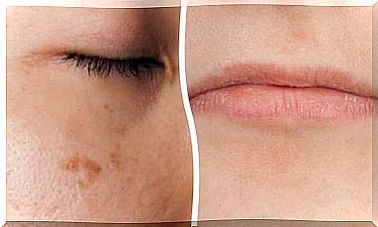3 Most Common Diseases Of The Vocal Cords
The most common diseases of the vocal cords have affected a large part of the world population. We’ve all been hoarse or know someone who has recently had a hoarse voice. Do you want to know more?

There are more or less common diseases of the vocal cords, but they are all related to the voice. These normal anatomical structures are where the vibrations come from that allow us to communicate with speech.
The vocal cords are located in the larynx and are actually small muscles attached to the anterior part. Above them are folds which are not muscular and which are called “false vocal cords”. Although they do not perform the same function, they are involved in phonation.
What are the most common diseases of the vocal cords?
The most common diseases of the vocal cords are few in number and can be counted on the fingers of one hand. They concentrate most of the voice disorders and appear in particular in people exposed to these pathologies.
They are generally linked to a risk factor. Teachers, for example, because of their profession, are in a constant state of vocal effort. Likewise, those who exercise outdoors in cold climates are prone to dysphonia.
Some disorders have an infectious origin, while others are typical of overuse, that is, anatomical alterations are formed due to the friction between the two vocal cords. Sometimes the diagnosis is difficult at first, when the signs are only emerging.
We can say that the most common diseases of the vocal cords are the following three:
- Nodules
- Laryngitis.
- Polyps.
Let’s take a closer look at each of them.

1. Vocal cord nodules
Vocal nodules are benign ball-shaped formations on the cords. These are thus located at the ends of the ropes and close the space where the air must pass. This is why the voice is affected.
Usually the first symptom is a change in the timbre of the voice. The person generally perceives that they are not speaking as before, with the same intensity or with the tone that they had before the injuries.
The main cause of vocal nodules is overuse of the voice. For this reason, it is considered an occupational disease, typical of teachers or singers who speak for a long time in front of others. In any event, this is not exclusive to them.
Certain risk factors favor the appearance of this disorder. Smokers are a group of people with a high probability of developing nodules because nicotine acts as an irritant to the vocal cords.
Likewise, gastroesophageal reflux disease is a condition that can damage the same area of the larynx. Hydrochloric acid in the stomach leaves its original place and travels to the respiratory tract, eroding the mucous membranes present there.
Fortunately, the nodule is still benign. This means that it does not progress into a malignant tumor like laryngeal cancer. This makes it possible to consider a conservative approach at the outset, with anti-inflammatory drugs and vocal rehabilitation; a task performed by speech therapists.
If the nodule is of considerable size, does not respond well to conservation measures, or if there are several with a poor prognosis for improvement, surgery is chosen. Of course, rehabilitation is necessary after the operation.
2. Laryngitis
Inflammation of the larynx from various causes is known as laryngitis. Although the term refers to an accumulation of inflammatory fluid throughout the structure of the organ, the vocal cords are still the most affected.
Therefore, the first symptom is dysphonia, that is, the alteration in the voice that becomes hoarse or disappears altogether, in what would be aphonia. It is insidious, much more than pharyngitis, and can last up to 3 weeks in total.
Along with the change in voice, there is usually a dry, itchy cough, caused by the lack of glands in the larynx. Since it cannot be lubricated, adequate mucus is never made to expel the irritant, be it that microorganism or an inert foreign body.
The causes are almost always contagious. In this category, viruses are the main cause. The winter season is a good time when a climate conducive to diseases of the upper respiratory tract develops.
Since these are viral infections, antibiotics are not indicated in almost any patient, except in cases of bacterial superinfection or in cases of microbes sensitive to these drugs. Treatment will therefore be symptomatic.
Resting the voice, but also an anti-inflammatory to reduce the fluid accumulated in the laryngeal tissues and nebulizations to thin the mucus are recommended. A sample for culture is not taken, unless the bacterial suspicion is very high.

3. Vocal polyps
Finally, polyps are very similar to nodules, but with different causes. Usually, they are protuberances of the vocal cords that protrude more and more, obstructing the space through which the air must pass.
As a common disease of the vocal cords, it is also found during a consultation for voice problems. Dysphonia and change of tone are indeed the particular signs that indicate the need for a diagnosis.
They also come from overuse of the voice, which is why they are called, in other words, “polypoid degenerations”. This indicates that the underlying process is a change in the tissue of the vocal cords, tending to exceed the usual limits.
Beyond the clinical examination, the specialist may use a complementary method to confirm the presence of polyps. This exam is a laryngoscopy, performed with a flexible device that is inserted through the nose, with a very small lumen and a camera that are responsible for recording the condition of the vocal cords live.
What if I have one of these common vocal cord diseases?
If a vocal lump or polyp is suspected, it is best to see an otolaryngologist. This specialty has sufficient knowledge to carry out the additional examinations required for these pathologies.
In the case of winter laryngitis, with persistent dysphonia, your doctor can resolve it. Either way, it is always preferable that the evaluation be professional, before proceeding to self-medication.









